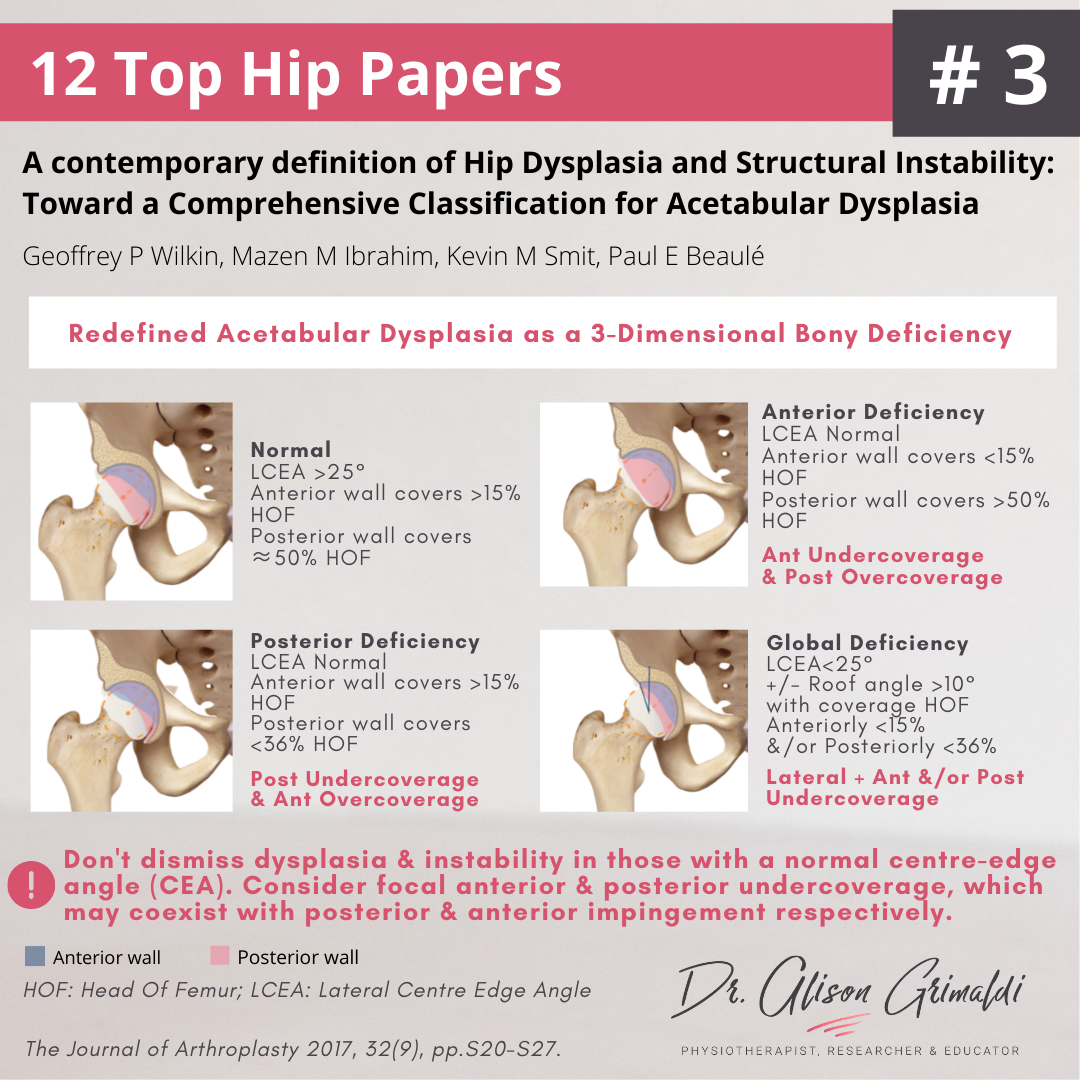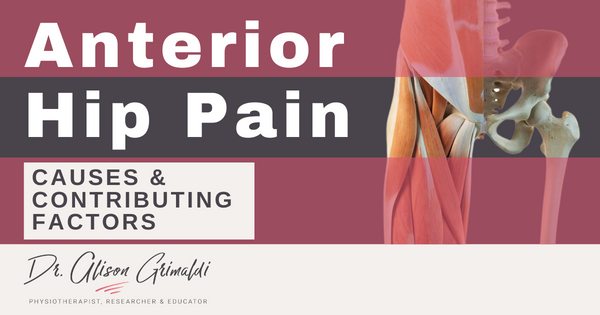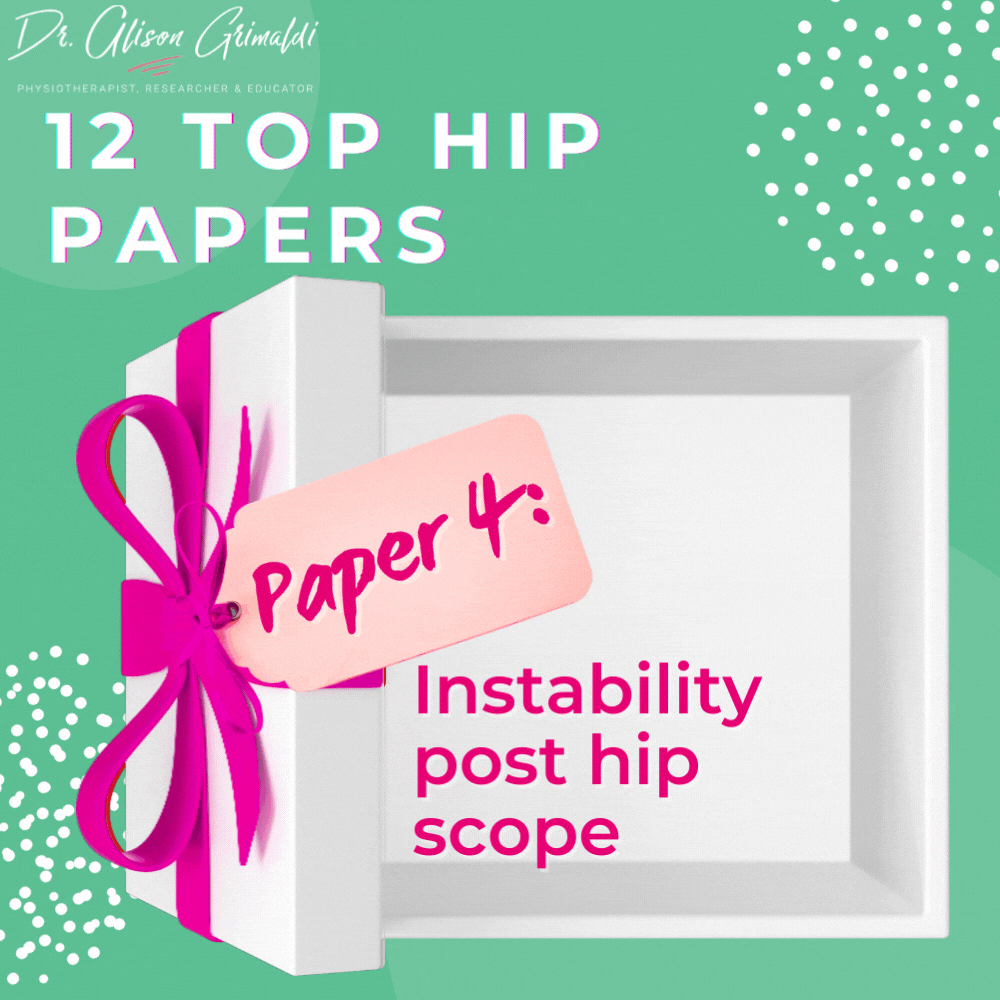3 of 12 Top Hip Papers – A contemporary definition of acetabular dysplasia

I hope you've enjoyed the first 2 days of my 12 Top Hip Papers series of miniblogs featuring 12 powerhouse hip papers. Day 1 and Day 2 papers focused on FAIS. Today we are still looking at hip related conditions, but shifting from impingement to instability. On Day 3, we review an excellent paper on defining acetabular dysplasia. Too often focal acetabular dysplasia and instability is overlooked in those who may have a normal lateral centre-edge angle. Wilkin and colleagues demonstrate that bony coverage of the femoral head needs to be considered in 3 dimensions, providing a contemporary definition of acetabular dysplasia as a 3-dimensional deficiency. Below you'll find an infographic and key learnings from this important paper.

For your convenience, we have also developed this content into a FREE 26-page full colour ebook!
Packed full of 12 Top Hip Papers - peer reviewed scientific papers that have contributed to our understanding of hip conditions and/or the assessment or management of hip pain or injury.
PAPER 3: A Contemporary Definition of Hip Dysplasia and Structural Instability: Toward a Comprehensive Classification for Acetabular Dysplasia
This paper provided a valuable contemporary definition of acetabular dysplasia and structural hip instability. The lateral centre-edge angle had become the primary measure considered in the assessment of acetabular coverage of the femoral head. Wilkin and colleagues highlight the limitations of this approach and describe situations where a normal lateral centre angle co-exists with focal structural hip instability, either anteriorly or posteriorly. This is most commonly due to excessive acetabular anteversion or acetabular retroversion respectively.
This more comprehensive consideration of acetabular morphology and orientation helps to conceptualise the close relationship between hip instability and impingement at opposite aspects of the joint.

Key learnings about the definition of acetabular dysplasia:
- Acetabular dysplasia is a 3-dimensional bony deficiency
- Focal anterior & posterior undercoverage and hip instability may occur in those with a normal lateral centre-edge angle
- Undercoverage and overcoverage and therefore hip instability and impingement, can occur within the same hip
- Reconceptualise, screen and address the sequalae of morphology from a 3-dimensional perspective
Another great Anterior Hip Pain blog

Anterior Hip Pain: Causes & Contributing Factors
Adequate consideration of individual causes and contributing factors is important for best outcomes.

Join Hip Academy Today
Join Hip Academy Today
By becoming a member today you can enjoy the benefits of a world class educational Hip Program, specifically designed by Dr Alison Grimaldi to help improve your knowledge surrounding the Hip and Pelvis, and become an expert in your field.
By becoming a member today you can enjoy the benefits of a world class educational Hip Program, specifically designed by Dr Alison Grimaldi to help improve your knowledge surrounding the Hip and Pelvis, and become an expert in your field.




